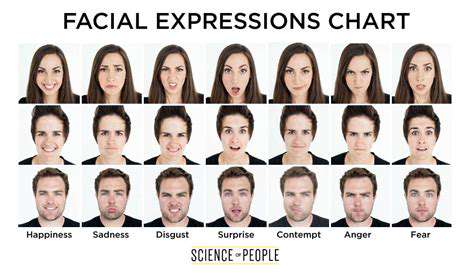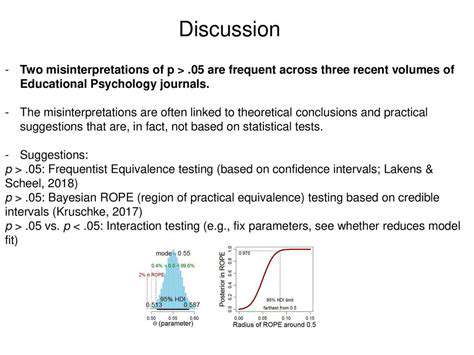Guide to Understanding Microexpressions

Recognizing the Six Basic Microexpression Emotions
Understanding the Significance of Microexpressions
Microexpressions are fleeting facial expressions, lasting only a fraction of a second, that reveal underlying emotions. They are often involuntary, meaning the person exhibiting them may not be consciously aware of displaying them. Recognizing these subtle expressions can provide valuable insights into someone's true feelings, even when they try to mask their emotions with a different, more socially acceptable expression. This ability to read between the lines of communication can be extremely beneficial in various situations, from personal relationships to professional settings.
Mastering the art of microexpression recognition is a powerful tool that can enhance empathy, build stronger relationships, and even foster a deeper understanding of human behavior. By paying close attention to these subtle cues, we gain a more complete picture of the person interacting with us.
Identifying Anger Microexpressions
Anger microexpressions often involve a furrowed brow, tightened eyelids, and a narrowed mouth. The eyebrows are typically pulled together and slightly down-turned, giving a tense or irritated appearance. The eyes may also appear narrowed or even slightly bulging, while the lips are compressed or pressed together firmly. These subtle shifts can be crucial in identifying someone experiencing anger, even if they are trying to maintain a neutral or calm facade.
Recognizing the subtle changes in the facial muscles, like the tightening of the jawline or the quick flash of the teeth, can help you understand the intensity of the anger being expressed. These details can often be overlooked, but by honing your observation skills, you can gain valuable insight into the person's emotional state.
Recognizing Fear Microexpressions
Fear microexpressions are characterized by a rapid widening of the eyes, often accompanied by a slight raising of the eyebrows. The upper eyelids are lifted, exposing more of the whites of the eyes, while the lower eyelids may also show a slight tightening. This is often accompanied by a slight opening of the mouth, possibly revealing the teeth, or a slight gasp. These subtle changes are often momentary, quickly fading back to a neutral expression.
Understanding the specific muscle movements associated with fear microexpressions – the rapid widening of the eyes, the raising of the eyebrows, and the slight opening of the mouth – is crucial for accurate interpretation. These expressions are often accompanied by a sense of vulnerability or apprehension.
Identifying Sadness Microexpressions
Sadness microexpressions typically involve a slight drooping of the corners of the mouth, creating a downward curve. The lower eyelids might appear slightly puffy or swollen, and the eyebrows may be slightly furrowed. The eyes might appear somewhat vacant or unfocused. The brow may also have a slight droop or a frown. The appearance is often subtle but indicative of the emotional state.
Detecting Surprise Microexpressions
Surprise microexpressions are often characterized by a sudden lifting of the eyebrows, creating a more arched or raised shape. The eyes are widened, revealing more of the whites, and the mouth often opens slightly, perhaps in a gasp or a subtle surprise. These expressions are quick and fleeting, often appearing for just a fraction of a second before returning to a neutral state. These rapid changes can be difficult to catch if you aren't looking closely.
Recognizing the combination of these features – the raised eyebrows, widened eyes, and slightly open mouth – is key to identifying surprise. The speed of these movements is also important in distinguishing them from other microexpressions.
Discerning Disgust Microexpressions
Disgust microexpressions are often characterized by a wrinkled nose, tightening of the facial muscles around the nose and mouth, and a slight upward pulling of the upper lip. The corners of the mouth may turn down, creating a slight frown. The eyes may also show a slight squint or narrowed expression. Pay attention to the specific muscle movements around the nose and mouth, which are often very subtle but indicative of disgust. These expressions are often associated with a feeling of revulsion or aversion.
Identifying the specific muscle movements associated with disgust microexpressions, such as the wrinkled nose and the upward pulling of the upper lip, is crucial for accurate interpretation. These expressions are quick and fleeting, often lasting only a fraction of a second.
Practical Applications and Potential Misinterpretations

Practical Applications of Potentiometers
Potentiometers, often overlooked in the realm of modern electronics, find surprisingly diverse applications in various fields. From simple volume controls in audio equipment to complex sensor systems in industrial settings, the principle of variable resistance remains a crucial component. Their ability to provide a continuously adjustable resistance allows for precise control and modulation of electrical signals, making them invaluable in applications requiring fine-tuning and dynamic adjustments. Their simple design and relatively low cost contribute to their widespread use in countless devices.
One particularly important application of potentiometers lies within the realm of analog signal processing. In these scenarios, they act as crucial intermediaries, transforming mechanical rotations or movements into corresponding electrical signals. This conversion capability is essential in countless applications, from controlling the position of robotic arms to adjusting the brightness of lights in response to environmental conditions. They are also employed in various test and measurement instruments, enabling accurate readings and calibrations.
Potentiometer's Role in Control Systems
Potentiometers play a significant role in automated control systems, providing a critical link between human input and machine output. Their ability to translate physical adjustments into electrical signals allows for the precise control of various processes, from temperature regulation in industrial ovens to the speed control of motors in automated machinery. This direct conversion of physical movement into electrical variables is a fundamental principle behind many automated systems.
Furthermore, potentiometers are often used in feedback loops. This allows for self-regulating systems where the output is constantly monitored and adjusted based on the desired outcome. This feedback mechanism, enabled by the potentiometer's ability to measure and respond to changes in the input signal, ensures stability and accuracy in a wide range of control applications.
Potentiometer Design and Variations
The design of potentiometers varies considerably based on the specific application. Different types of potentiometers are available, each with its own unique characteristics and features. These variations often involve the materials used for the resistive element, the mechanism for adjusting the resistance, and the overall construction of the device. Understanding these differences is crucial for selecting the appropriate potentiometer for a given task.
Different materials and construction methods affect the potentiometer's performance characteristics, such as its resistance range, stability, and linearity. Engineers must carefully consider these factors during the design phase to ensure the device meets the specific requirements of the application, achieving the desired level of accuracy and reliability.
Read more about Guide to Understanding Microexpressions
Hot Recommendations
- Grooming Tips for Your Bag and Wallet
- Best Base Coats for Nail Longevity
- How to Treat Perioral Dermatitis Naturally
- How to Use Hair Rollers for Volume
- How to Do a Graphic Eyeliner Look
- Best DIY Face Masks for Oily Skin
- Guide to Styling 4C Hair
- Guide to Improving Your Active Listening Skills
- How to Fix Cakey Foundation
- Best Eye Creams for Wrinkles



![Grooming Tips for Women [Daily Habits]](/static/images/29/2025-05/NailCareforPolishedPerfection.jpg)







